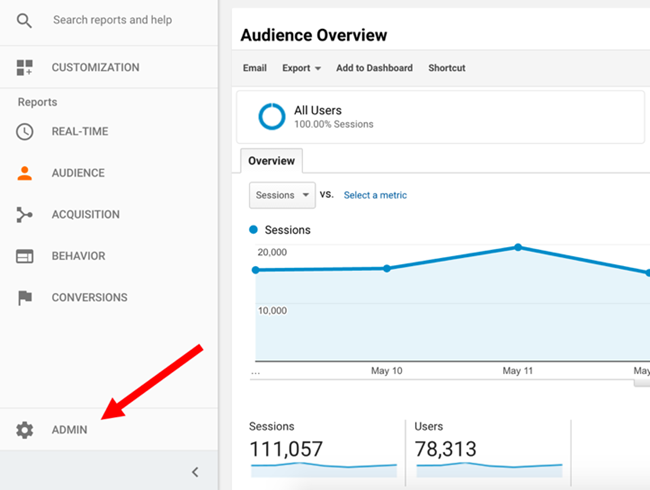Reliable Strategies for Remarketing In Google Analytics
Wiki Article
Using Remarketing in Google Analytics: A Comprehensive Guide
Utilizing remarketing in Google Analytics supplies services a strategic edge in getting to out to potential consumers. The ability to target individuals who have actually already engaged with your web site provides a distinct opportunity for customized marketing efforts. By recognizing exactly how to craft target market checklists and deploy them successfully, businesses can considerably improve their conversion prices. The details of setting up and maximizing remarketing projects require a comprehensive understanding of audience segmentation and performance evaluation. This guide will certainly clarify the crucial steps involved in harnessing the full potential of remarketing in Google Analytics, resulting in boosted advertising outcomes.Understanding Remarketing in Google Analytics
Remarketing in Google Analytics allows businesses to tactically target customers who have formerly engaged with their web site or mobile app. By leveraging information from Google Analytics, organizations can develop tailored remarketing checklists based upon individual habits, such as web pages seen, actions taken, or details goals attained. This powerful device allows organizations to re-engage with users that have actually revealed interest in their product and services, ultimately boosting the likelihood of conversion.Comprehending the various kinds of remarketing methods is crucial for a successful project - What Is “Remarketing” In Google Analytics?. Google Analytics offers different alternatives, consisting of standard remarketing, vibrant remarketing, and remarketing lists for search advertisements (RLSA) Each kind offers a special objective and can be customized to fulfill specific marketing goals
Moreover, assessing the efficiency of remarketing campaigns is important for maximizing results. Google Analytics supplies important insights right into the performance of various remarketing approaches, allowing companies to make data-driven choices and refine their targeting technique. By continually readjusting and keeping track of remarketing initiatives based on analytics data, organizations can take full advantage of ROI and drive success in their advertising and marketing initiatives.
Setting Up Remarketing Campaigns

After setting up target market listings, the following action is to connect Google Analytics with Google Advertisements. By connecting these two systems, companies can perfectly move target market checklists from Google Analytics to Google Advertisements for remarketing purposes. This assimilation permits more exact targeting and far better campaign efficiency.
As soon as the accounts are connected, businesses can create remarketing campaigns in Google Ads using the target market details formerly defined in Google Analytics. These projects can be personalized with certain ad creatives, messaging, and bidding process methods to properly re-engage with past visitors and drive conversions. By adhering to these actions, services can utilize the power of remarketing to enhance their advertising and marketing initiatives and enhance ROI.
Using Audience Segmentation Methods

Predefined segments in Google Analytics enable you to promptly analyze common audience classifications fresh individuals, returning customers, or customers who completed a particular goal on your website. Customized sections, on the various other hand, allow you to develop distinct sections based upon particular requirements that are very important to your company goals. Dynamic remarketing checklists automatically adjust based on customer habits, showing individualized advertisements to individuals who have actually engaged with your website particularly methods.
Studying Remarketing Performance Metrics
Upon reviewing the performance of remarketing campaigns in Google Analytics, the analysis of key efficiency metrics provides important understandings into target market interaction and conversion rates. More hints By diving into metrics such as click-through rates (CTR), conversion rates, expense per procurement (CPA), and return on advertisement invest (ROAS), marketing experts can evaluate the success of their remarketing efforts. Examining these metrics allows online marketers to enhance projects, fine-tune audience targeting, and assign spending plans properly to improve general remarketing efficiency.Optimizing Remarketing Methods
When refining remarketing approaches in Google Analytics, focusing on target market division is paramount for accomplishing campaign success. By dividing your audience into specific segments based on their habits, demographics, or interests, you can customize your ads more effectively per team. This targeted technique increases the possibility of engaging customers that have actually currently shown interest in your product and services, bring about higher conversion prices.An additional critical aspect of enhancing remarketing techniques is continuously testing and refining your projects (What Is “Remarketing” In Google Analytics?). A/B testing various ad creatives, messaging, or offers can help you identify what resonates ideal with your target market and drives the most conversions. By analyzing the performance of these tests in Google Analytics, you can make data-driven decisions to maximize your remarketing efforts even more
Additionally, leveraging vibrant remarketing can significantly enhance your campaign results. This function enables you to reveal tailored ads to users based on their past interactions with your web site, showcasing service or products they have actually previously seen. By supplying customized web content to customers based upon their actions and rate of interests, vibrant remarketing can help enhance involvement and drive conversions.
Verdict
Finally, taking advantage of remarketing in Google Analytics is a strategic approach to target individuals that have previously involved with an internet site. By developing customized audience checklists and making use of audience division approaches, businesses can optimize remarketing advocate enhanced conversion rates. Assessing performance metrics and continuously maximizing web methods are vital for optimizing the performance of remarketing efforts.Google Analytics provides various choices, including conventional remarketing, vibrant remarketing, and remarketing listings for search advertisements (RLSA)After establishing up audience checklists, the following action is to link Google Analytics with Google Ads. By linking these two platforms, businesses can effortlessly transfer target market lists from Google Analytics to Google Ads for remarketing functions.Once the accounts are connected, companies can develop remarketing campaigns in Google Advertisements utilizing the audience lists previously defined in Google Analytics.When refining remarketing methods in Google Analytics, focusing on target market segmentation try here is paramount for accomplishing project success.
Report this wiki page